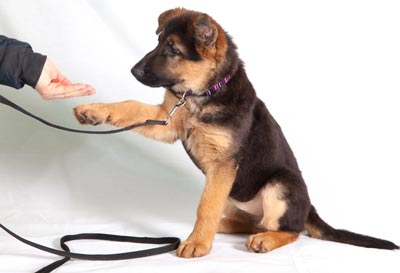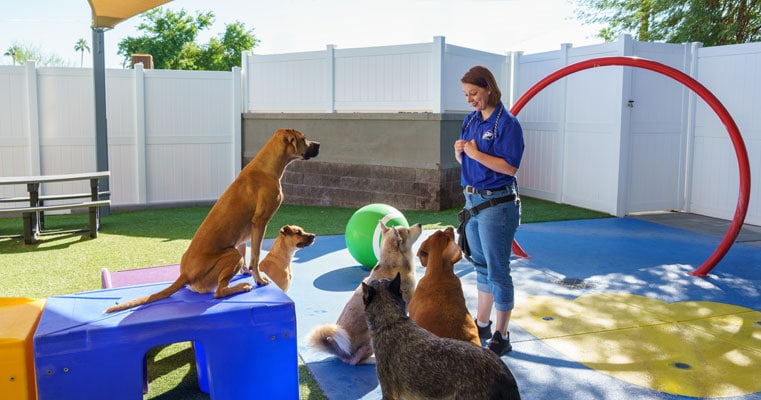Dog Training Techniques to Help Manage Aggressive Behavior in Dogs
Dog Training Techniques to Help Manage Aggressive Behavior in Dogs
Blog Article
Newbie's Overview to Successful Pet Training at Home
Effectively training a dog at home calls for a nuanced understanding of canine behavior and effective communication strategies. Establishing clear training goals, utilizing high-grade rewards, and keeping uniformity across family participants are crucial aspects. Incorporating training into day-to-day routines can boost both engagement and retention.
Recognizing Dog Behavior
Understanding pet habits is essential for efficient training and cultivating a harmonious relationship in between people and their canine companions. Canines interact largely through body movement, articulations, and faces, making it crucial for proprietors to translate these signals precisely. Recognizing actions such as tail wagging, grumbling, or cring can give understandings into a pet dog's emotion and objectives.

Usual behavior issues, such as aggressiveness, anxiety, or too much barking, frequently stem from misunderstandings or unmet requirements. Observing and addressing these problems quickly can stop escalation and make certain a favorable training experience. By cultivating a deep understanding of canine actions, owners can tailor their training techniques to match their canine friends, ultimately leading to a contented and mannerly family pet.
Crucial Educating Devices
A well-appointed training area can significantly enhance the effectiveness of pet training in your home. Important training tools make certain that both the trainer and the pet dog can take part in productive sessions that cultivate discovering and bonding.

Buying a tough chain and a comfortable, well-fitting collar or harness is important for security and control. These tools aid establish limits and ensure the pet dog remains safe and secure during training. In addition, a designated training area, devoid of disturbances, help focus for both the instructor and the canine.
Educating aids such as training pads, cones, or agility equipment can likewise enhance the experience by introducing variety and obstacles. Finally, having a note pad or digital application for tracking progression can be important, permitting you to note successes and areas for renovation. Making use of these important devices will certainly create a positive training setting and lay the foundation for efficient discovering.
Developing a Training Routine
Establishing a regular training regimen is important for efficient pet training at home. A well-structured routine not only aids in reinforcing preferred actions yet also supplies your dog with a complacency and predictability. To produce a reliable training routine, begin by determining certain training objectives, such as standard commands, chain strolling, or housebreaking.
Choose a designated time each day for training sessions, ideally when your canine is responsive and sharp. Procedure needs to be brief, about 5 to 15 mins, to keep emphasis and prevent fatigue. Consistency in timing and setting will certainly boost your pet's understanding experience.
Include training right into everyday activities to strengthen abilities. For instance, practice commands throughout walks or nourishment, which incorporates finding out right into natural routines. In addition, continue to be versatile and change the routine as necessary, accommodating your pet's power levels and mood.
Favorable Support Methods
Positive reinforcement techniques are basic to efficient canine training, promoting try this site wanted actions with benefits rather than punishment. This approach uses positive stimulations, such as deals with, This Site praise, or playtime, to motivate canines to repeat specific activities. The foundation of this approach is timing; benefits must be given right away following the preferred behavior to develop a clear association.
When implementing favorable support, it is important to select rewards that are inspiring for your pet. High-value treats, such as small pieces of chicken or cheese, can be especially effective during training sessions. Additionally, varying the benefits can maintain your pet dog's interest and interest.
Beginning with basic commands, like "sit" or "stay," and progressively progression to a lot more complex jobs. Uniformity is key; ensure that all household members utilize the very same commands and incentive systems to avoid complication.
Furthermore, it is essential to stay client and stay clear of irritation. Dogs, like humans, learn at their very own pace. By fostering a supportive training environment through favorable reinforcement, you can improve your pet's knowing experience while reinforcing the bond between you and your furry buddy, preparing for effective training end results.
Common Training Obstacles
While training a pet dog in your home can be a rewarding experience, it typically includes a collection of common challenges that can evaluate both persistence and uniformity. One widespread issue is interruption. Canines may come to be conveniently averted by sounds, activities, or perhaps aromas in their setting, making it difficult to click reference maintain their focus throughout training sessions.
One more challenge is variance in commands and support. It can hinder and confuse the pet dog development if household participants make use of different cues or rewards. Establishing a unified technique is important for efficient interaction.
Furthermore, pets can experience stress or anxiety, particularly if they do not comprehend what is expected of them. This can cause undesirable actions, such as eating or barking.
Ultimately, the timing of reinforcement is critical (Dog training). Postponed benefits can diminish the performance of favorable support, as pets may stop working to link the habits with the reward
Conquering these challenges calls for commitment, clear interaction, and an organized training plan. Recognizing and resolving these typical barriers will certainly lead the way for a much more effective and satisfying training experience in your home.
Verdict
In final thought, effective dog training in your home demands a detailed understanding of canine behavior and effective interaction approaches. By developing clear training goals and utilizing top quality deals with alongside favorable reinforcement, the training process ends up being much more fulfilling for both the canine and the instructor. Patience, flexibility, and uniformity are essential components that assist in discovering. Inevitably, incorporating training into everyday regimens improves the bond in between pet and proprietor, making the experience both productive and pleasurable.
Establishing a constant training routine is crucial for reliable pet dog training at home.Favorable support methods are fundamental to effective dog training, advertising preferred habits through incentives instead than punishment (Dog training). By fostering an encouraging training setting with positive support, you can boost your pet dog's knowing experience while strengthening the bond in between you and your fuzzy companion, laying the foundation for effective training outcomes
In verdict, effective dog training at home demands a detailed understanding of canine habits and effective interaction methods. By establishing clear training objectives and using high-quality deals with alongside favorable reinforcement, the training procedure comes to be more rewarding for both the dog and the instructor.
Report this page